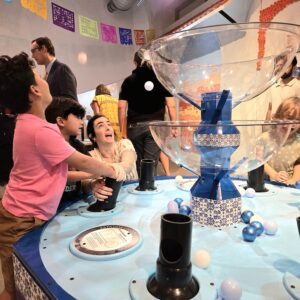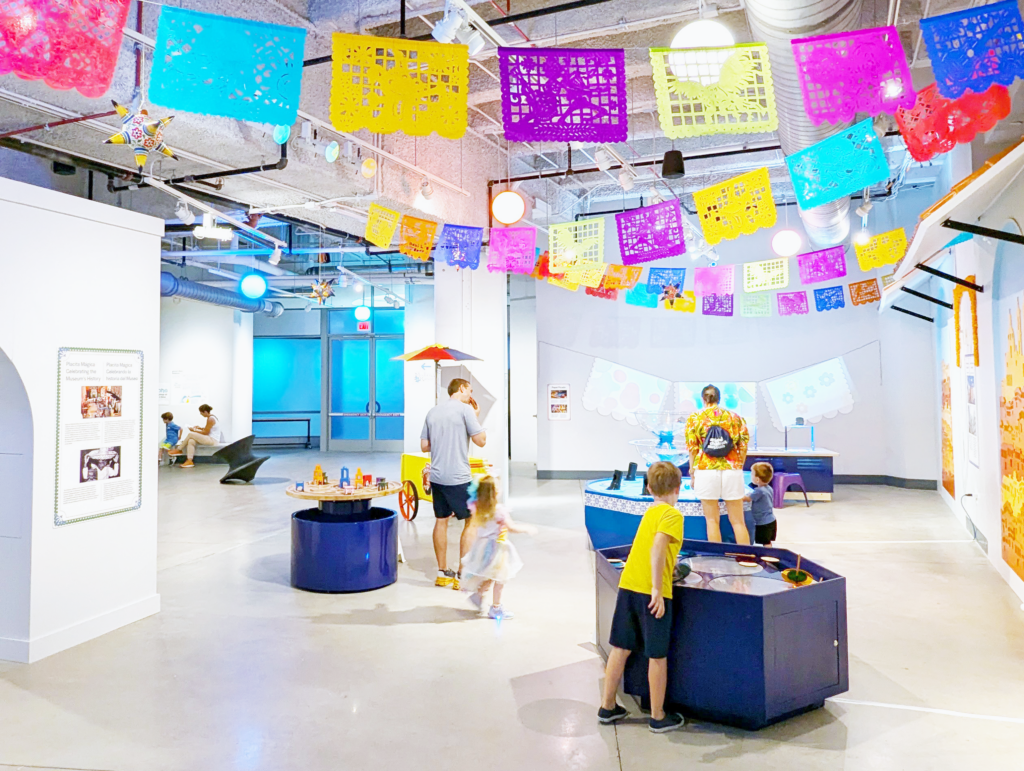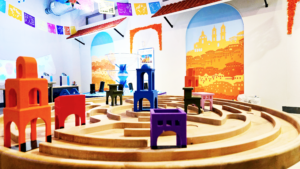Do you remember the first time a museum sparked your imagination as a child? Maybe it was a tour of the local science center or learning about your favorite artists at a gallery. For many Washington natives, that captivating moment happened at Capital Children’s Museum.
History of the Museum: The Original Mexico Exhibit
Five years after its founding in 1974, Capital Children’s Museum – renamed with congressional designation in 2003 to National Children’s Museum – opened its H Street location as one of the first children’s museums in the country. Built in an old convent, the museum’s home was a 150,000-square-foot, three-story space dedicated to serving Washington, D.C.’s youth. A rousing success for decades to come, one of the first installations at the H Street location was the Mexican cultural exhibit.
In a multifloor immersive space, children could engage with Mexican cultural traditions and hands-on activities. In partnership with the Mexican government, the old chapel of the convent was turned into a town square with a large fountain at the center and tiled building facades climbing the 25-foot-high walls. A replica Mayan pyramid and tall archways lined the space in shades of deep orange, blue and cream. Downstairs, the first floor was transformed into a replica village including a storefront called La Abuelita and a farmyard with a dirt floor and log cabin. Activities included making homemade tortillas, buying and selling goods and playing with animals. The upstairs exhibit space was dedicated to a show on loan from the Craft and Folk Art Museum in Los Angeles that focused on Mexican art titled Artesanos Mexicanos. Wood carving, embroidery and papier-mâché pieces were accompanied by films showing the artists creating their work.
The original Mexican cultural exhibit was open through the 2000s and is revered in the collective memory of Capital Children’s Museum. The exhibit celebrated cultural exchange and learning through play, two concepts that are still part of National Children’s Museum’s mission today. As the museum celebrates the 50th anniversary of its founding in 1974, it is dedicated to remembering the past by honoring the legacy of Capital Children’s Museum while also reaffirming its mission through the modern lens of science, technology, engineering, arts and math (STEAM). As a tribute to the museum’s past and a nod to the original Mexico exhibit, National Children’s Museum opened an anniversary exhibit, Placita Mágica.
Placita Mágica: Where D.C. Meets Mexico

Placita Mágica, or “magical little plaza,” is a welcoming space bursting with STEAM concepts and interactive play. An homage to the original Mexico exhibit, this reimagined experience invites young learners to explore Mexican traditions through hands-on activities, expanding their worldview and sense of place.
Visitors to this enchanting plaza are surrounded by Mexican cultural elements as soon as they walk through the opening archway. Large cityscape silhouettes, replica clay-tile rooftops, marigold-covered panels, piñatas and papel picado (folk art cut paper) banners adorn the plaza, creating the sense that you are entering a space primed for gathering and celebration.
The plaza includes five hands-on exhibits inspired by Mexican culture, each inviting visitors to learn, explore and play through different STEAM concepts. Central to the plaza is a stylized fountain where visitors experiment with fluid dynamics as they bring the fountain to life. Assemble and test your own spinning top at the turn table exhibit. Maneuver a ball through a tilt-table maze and take a journey around a village of your own creation. Tap into your inner artist and create your own papel picado design using colorful tiles on the papel picado projection table. Explore the aromas of Mexican hot chocolate at Abuelita’s cart and recall your own memories of these wondrous scents.
Authenticity was at the forefront of the exhibit design. We worked closely with the Embassy of Mexico and Mexican Cultural Institute of Washington, D.C., to ensure the thoughtful integration of Mexico and Mexican culture throughout the design process. Whether it’s recognizing the talavera ceramic tiles of the fountain or the cityscape of Guanajuato, the small touches and attention to detail make guests feel like a little bit of their own culture is present in this exhibit. As laughter and joy surround you in the plaza, you won’t be surprised to hear adults reminiscing about their childhood and the similar playful experiences they enjoyed as children.
Placita Mágica is on display at National Children’s Museum through January 3, 2025, and is included in the cost of admission.
Erik Smith is director of exhibits & education at National Children’s Museum. He is a seasoned museum professional with over 25 years of experience in informal and formal STEM education. Over the past two and half years, Erik has been responsible for all aspects of exhibit development and maintenance, education programming and visitor experience at the museum.



